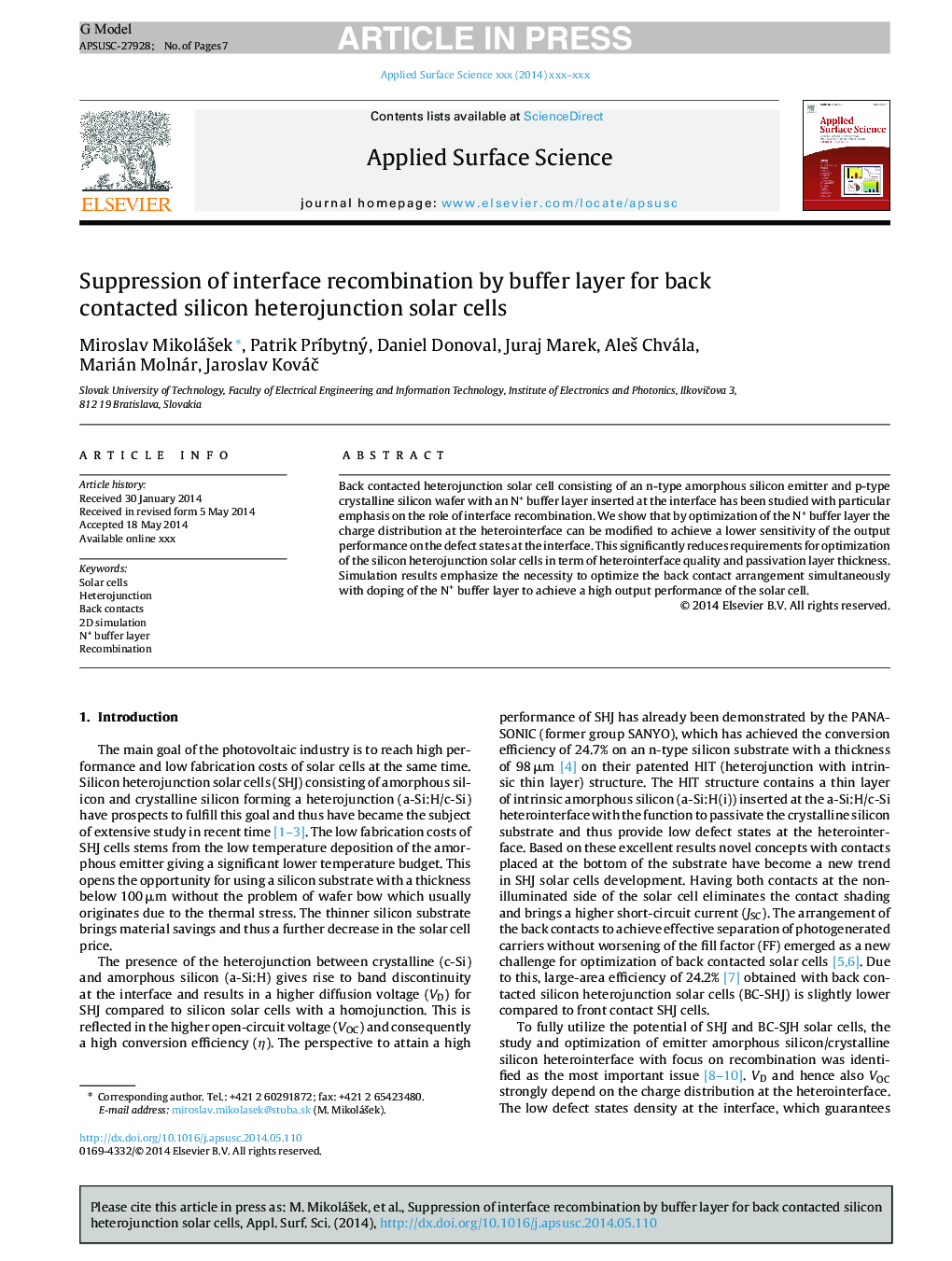| Article ID | Journal | Published Year | Pages | File Type |
|---|---|---|---|---|
| 5349865 | Applied Surface Science | 2014 | 7 Pages |
Abstract
Back contacted heterojunction solar cell consisting of an n-type amorphous silicon emitter and p-type crystalline silicon wafer with an N+ buffer layer inserted at the interface has been studied with particular emphasis on the role of interface recombination. We show that by optimization of the N+ buffer layer the charge distribution at the heterointerface can be modified to achieve a lower sensitivity of the output performance on the defect states at the interface. This significantly reduces requirements for optimization of the silicon heterojunction solar cells in term of heterointerface quality and passivation layer thickness. Simulation results emphasize the necessity to optimize the back contact arrangement simultaneously with doping of the N+ buffer layer to achieve a high output performance of the solar cell.
Related Topics
Physical Sciences and Engineering
Chemistry
Physical and Theoretical Chemistry
Authors
Miroslav MikoláÅ¡ek, Patrik PrÃbytný, Daniel Donoval, Juraj Marek, AleÅ¡ Chvála, Marián Molnár, Jaroslav KováÄ,
